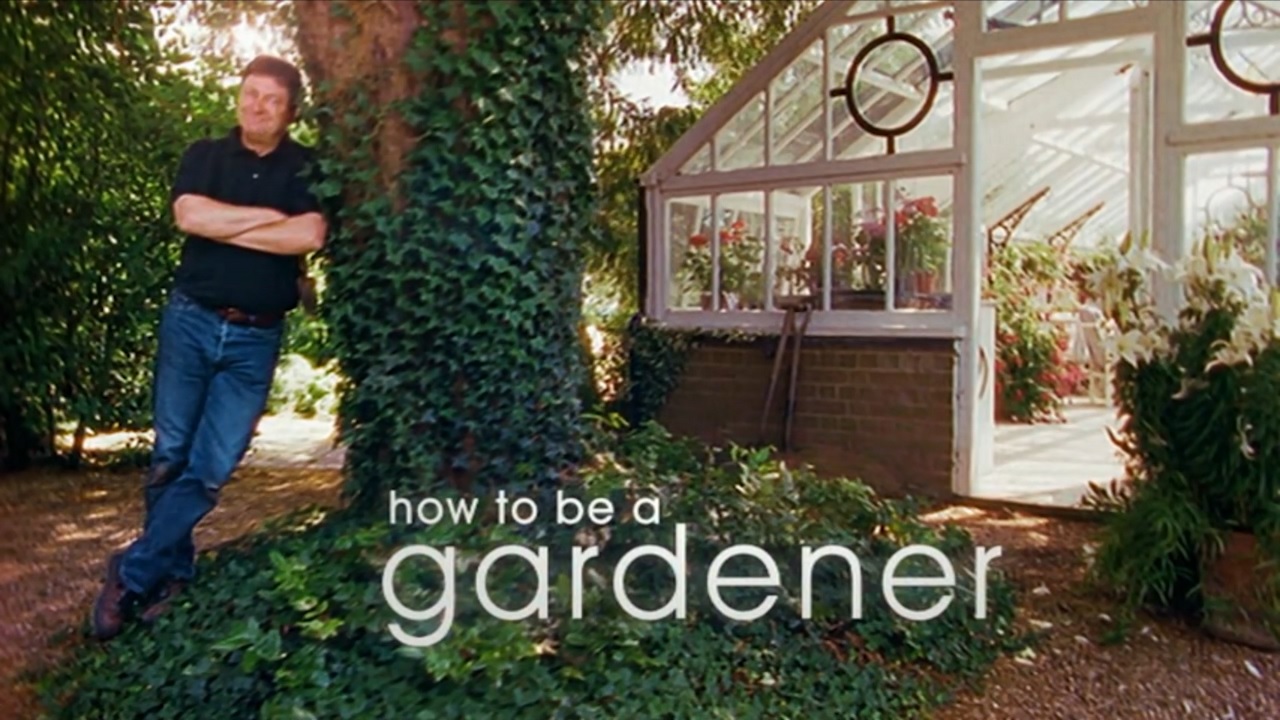How to Be a Gardener episode 7

How to Be a Gardener episode 7: Growing flowers is wonderfully fulfilling. Growing fruit and vegetables is wonderfully filling. To pick and eat your own crops is a great thrill. You know they have been well grown; you know they are fresh and you know that, just like your own baby, they are the best in the world!
Here you can discover just how to cultivate your own fruit and vegetables – and you don’t need a big garden to do so. Edible crops can be squeezed into the tiniest of plots.You’ll be surprised at how good some of them look – it’s a shame to pick them really!
How to Be a Gardener is a BBC documentary series presented by gardener Alan Titchmarsh, providing a complete online guide gardening for beginners. Let's face it, gardening can be pretty daunting. All those Latin names, the bugs and blights that can attack your plants just when they are looking their prettiest. How does anyone manage to grow anything? The series consists of eight 30-minute long episodes that cover everything you need to know to give you a great start in gardening.
How to Be a Gardener episode 7
Alan Fred Titchmarsh is an English gardener, broadcaster, poet, and novelist. After working as a professional gardener and a gardening journalist, he established himself as a media personality through appearances on gardening programmes. He has developed a diverse writing and broadcasting career.
Titchmarsh’s first few television appearances were on the long-running BBC television show Nationwide as a horticulture expert. This led to his being invited to present coverage of the Chelsea Flower Show for BBC television in 1983. Titchmarsh hosted this every year until 2013.
In 1996 the cancellation of Pebble Mill at One gave Titchmarsh the opportunity to move back towards his first love, gardening, and he took over as host of another long-running BBC television programme, Gardeners’ World in the same year, the show being filmed in his own garden. Titchmarsh has been married to Alison since 1975 and they have two children, Polly (born 1979) and Camilla (born 1981). In addition to his extensive television and writing work, Titchmarsh is also trustee of his own charity, ‘Gardens for Schools’, and others, including ‘Seeds for Africa’.
Growing flowers
Growing flowers can be a delightful and fulfilling hobby for many people. Not only do flowers bring beauty and color to your environment, but the process of nurturing them can also bring a sense of peace and satisfaction. Whether you are a seasoned gardener or just starting out, there are a few key things to keep in mind when growing flowers.
First, it is important to choose the right location for your flower garden. Consider factors such as sunlight exposure, soil quality, and water access when selecting a spot. Make sure that the area you choose has adequate sunlight, as most flowers need at least six hours of direct sunlight per day to thrive. Soil quality is also important, as good soil will provide the nutrients that your flowers need to grow strong and healthy. Finally, make sure that you have access to a reliable source of water, as your flowers will need to be watered regularly in order to survive.
Next, it is important to choose the right type of flowers for your garden. Consider factors such as the climate in your area, the amount of sunlight and water that your garden gets, and the type of soil you have. Different flowers have different requirements, so it is important to select species that are well-suited to your specific conditions. Some popular flower varieties include roses, sunflowers, daisies, and lilies, but there are many other options to choose from as well.
When planting your flowers, it is important to follow the instructions on the seed packets or plant labels closely. Make sure to plant at the right depth, space the plants appropriately, and provide adequate water and nutrients to help them establish roots. It is also a good idea to mulch your flower beds to help retain moisture in the soil and reduce weed growth.
One of the most important aspects of growing flowers is proper care and maintenance. Regular watering, fertilizing, and pruning are essential to keep your flowers healthy and looking their best. Make sure to water your flowers deeply and consistently, and avoid overwatering, which can lead to root rot. Fertilize your flowers regularly with a balanced fertilizer, and prune dead or damaged stems to encourage healthy growth and promote a neat appearance.
In addition to these basic care tips, there are many other things you can do to help your flowers thrive. For example, you can incorporate companion planting, which is the practice of planting certain species together to enhance growth and deter pests. You can also use insecticides or natural deterrents to protect your flowers from harmful pests and diseases.
Growing fruit and vegetables - How to Be a Gardener episode 7
Growing your own fruit and vegetables can be an incredibly rewarding and fulfilling experience. Not only does it provide you with fresh, healthy food, but it also gives you the opportunity to connect with nature and develop a deeper understanding of where your food comes from. Here are some tips for successfully growing your own fruit and vegetables.
Start with the right soil. A key factor in growing healthy fruit and vegetables is having good soil quality. Make sure the soil in your garden is fertile, well-draining, and rich in organic matter. If you're not sure about the quality of your soil, you can have it tested to determine what amendments you may need to add. Choose the right plants for your area. Different fruits and vegetables have different growing requirements, so make sure you select plants that are well-suited to your climate and growing conditions. Consider factors such as sunlight exposure, soil type, and rainfall when selecting plants.
Plant at the right time. Make sure you plant your fruit and vegetables at the right time of year to ensure optimal growth and production. Check your local gardening guide or talk to a local expert to determine the best planting time for your area and watch How to Be a Gardener episode 7. Provide adequate water. Most fruit and vegetables require regular watering to grow and produce, so make sure you provide adequate water to your plants. This can be done through rainfall, manual watering, or by setting up a drip irrigation system. Make sure to water deeply and consistently, and avoid overwatering, which can lead to root rot.
Fertilize regularly. To help your fruit and vegetables grow strong and healthy, it's important to fertilize regularly. Choose a balanced fertilizer and follow the instructions on the label. You can also use compost or other organic matter to provide your plants with additional nutrients. Protect your plants from pests and diseases. One of the challenges of growing your own fruit and vegetables is dealing with pests and diseases. Regularly check your plants for signs of damage and take action to control any pests or diseases you find. You can use insecticides or natural deterrents, such as companion planting, to help protect your plants.
Harvest your crops at the right time. Make sure you harvest your fruit and vegetables at the right time to ensure they are at their best. Some crops, such as tomatoes, should be picked when they are fully ripe, while others, such as lettuce, can be harvested earlier. Check your local gardening guide or talk to a local expert to determine the best harvesting time for your crops. Growing your own fruit and vegetables can be a rewarding and fulfilling experience, and it's never been easier to get started. With the right preparation, care, and attention, you can successfully grow a bounty of fresh, healthy produce right in your own backyard. So why not give it a try today and enjoy the many benefits of growing your own fruit and vegetables!
https://hdclump.com/how-to-be-a-gardener-episode-7/


